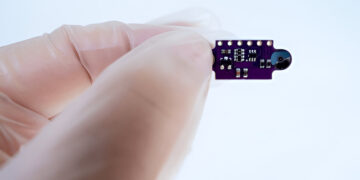Do you feel like you’re running to the restroom more often than you’d like? Or have to deal with the urgent and sudden need to pee that put a stop to your daily activities? If this sounds relatable, it might be a case of what is known as overactive bladder (OAB). OAB is more than just an inconvenience since it can affect one’s quality of life by restricting social activities or even interrupting sleep. The upside? Treatment is available.
This guide will explain all the details concerning OAB, including its symptoms and probable causes, along with effective treatments and specialized care from our clinic located in Brookfield, WI.
What is Overactive Bladder (OAB)?
Overactive bladder isn’t a single condition but instead consists of a set of symptoms that impact how the bladder works. The defining feature of OAB is experiencing a sudden uncontrollable urge to urinate—in many instances leading one there regularly. While increasingly common among the older population, OAB does not discriminate and can occur in people regardless of age or gender.
OAB develops when the bladder muscles spasm and contract even without being full. It can create a constant sense of needing to urinate. The reason is often unclear, but it can commonly be related to some level of nerve damage, muscle weakness, or other health problems.
In our clinic, OAB is integrated within specialized urogynecological services. Through advanced diagnostics, thorough problem analysis, and compassionate care, our specialists work to uncover and address root causes while customizing treatment plans.
Key Symptoms of Overactive Bladder
Identifying the signs is the first step towards treatment. Here’s a short list of most common indicators associated with this condition:
An Immediate Need to Urinate
Often referred to as urgency in overactive bladder is sudden uncontrollable urge that needs immediate attention.
Urinating Frequently
Bathroom use frequency considerably increases from usually more than eight visits during daytime hours and several bathroom visits during sleep waking hour.
Urgent Leakage
Some patients may experience involuntary urination before reaching the toilet due to strong desire adding an urge component has overall reduction in self-esteem leading avoidance of social situations
Distrupted Sleep
Nocturia (the need to wake up at night to urinate) and other sleeping issues can make you feel tired and unfocused during the day.
Seek professional help if these symptoms sound familiar. Even though Overactive Bladder Symptoms may feel lonely, it is quite common, and treatment options exist.
Common Causes of Overactive Bladder
Primary Factors of Overactive Bladder Knowing the overactive bladder’s causes helps in finding appropriate treatments. Below are some of the most common factors that can contribute to this condition:
- Nerve Injury
OAB has a major link with disorders like diabetes, stroke, multiples cleorsis, or spinal cord injuries which cause damage to the regulating nerves of bladder function.
- Weak Pelvic Floor Muscles
Due to some life happenings such as giving birth, women tend to develop OAB due to weakening of muscles supporting bladder and bowel.
- Urinary Tract or Bladder Problems
Chronic urinary infections and inflammation of bladdar can irritate muscles causing symptoms similar to OAB.
- Hormonal Changes
Menopause may affect bladder control or increase the risk of overactive bladder through change in hormonal balance making enhancement in women prone for it.5. Lifestyle Factors
Overeating, drinking too much alcohol or caffeine, smoking, and being overweight may worsen OAB symptoms. These factors may irritate the bladder or increase pressure on it.
- Aging
Muscles and nerves in our body begin to wear out and get weaker as we get older, which increases the chances of getting OAB.
At our clinic located in Brookfield, Wisconsin, we have all the necessary tools to do detailed assessments such as urodynamic studies and bladder scans to find out what is causing your symptoms.
All Over Treatment Options for OAB
Even though OAB feels terrible, it can be managed with proper treatment. In our clinic, we strive to offer personalized attention to each patient so that they receive care relevant to them. Let’s explore the most impactful treatments:
Lifestyle Modifications
Bladder Training
Setting specific windows for restroom breaks can help retrain your bladder when done incrementally.
Fluid management
Reducing caffeine, alcohol consumption and curbing fluids during late hours are simple ways towards minimizing symptoms of OAB.
Dietary Changes
Avoiding irritating foods such as citrus and spicy dishes provide relief.
Squeeze Exercises
Also known as Kegel exercises, these improve strength around the bladder muscle allowing you to regain control over time with continued practice. At our clinic, we often recommend pelvic floor therapy guiding patients through techniques step by step so they receive maximum value.
Medications
Some medicines are designed to help relax bladder muscles, alleviate urgency, and enhance the overall function of the bladder. Your doctor may recommend anticholinergics or beta-3 adrenergic agonists based on your specific needs and conditions.
More Complex Non-Surgical Methods
Emsella
Our clinic offers Emsella for OAB, a revolutionary non-invasive treatment. This technique uses electromagnetic energy to strengthen pelvic floor muscles enhancing control over the bladder in both men and women. Besides, each session is brief with no pain involved along with zero downtime needed afterward.

Nerve Stimulation (Neuromodulation)
ccasionally patients can experience symptoms of OAB; however professionals consider that stimulating nerves responsible for controlling the bladder can have a remarkable impact treating these symptoms. Some therapies like PTNS also classified as peripheral nerve stimulation through placing electrodes near major veins are minimally invasive but effective.
Behavioral Therapies
Cognitive behavioral therapies focus on educating patients with essential knowledge about managing their daily OAB symptoms while building personalized lifestyle changes suited for them.
Surgical Options
Surgery is typically reserved for those who suffer from more advanced stages of OAB that do not respond well to other forms of therapy such as medications or exercises designed for this purpose. Most patients respond well these methods and options include non-resecting augmentative cystoplasty where addition of some bowel segment instead juice results in considerable increase in volume without occlusion while certain techniques might be used to block offending neuromuscular signals routed from guts aiming at inappropriate contractions of myogenic origin to compress and empty the bladder
In our clinic, careful and advanced diagnostics help in developing a treatment plan which begins conservatively and advances only if necessary.
Why Choose our Clinic for Overactive Bladder Treatment in Brookfield, WI?
Managing overactive bladder needs specialized focus along with an appropriate support system to provide treatment. We prioritize the following at the clinic:
- Caring Through The Process
As a multidisciplinary clinic, we value every single patient, therefore putting extra effort into making them comfortable as well as supporting them through the entire OAB process. - Urogynaecology Expertise
The pelvic health of patients is managed and treated by a urogynaecologist who works actively with other specialists within the facility, offering both surgical and non-surgical approaches to these conditions. - Latest Treatment Options Available
Achieving positive results requires use of modern technologies such as Emsella, so we make sure that these technologies are integrated into our practice for lasting results. - Individualized Approach
Every individual is different. Because of this reason, working on a personal approach gives better chances of achieving set health goals as all things considered change from client to client.
Located in Brookfield…
The scope of serviced offered includes face-to-face and remote consultations making it much easier for clients to receive services without burdening themselves with travel.
If you want an improved quality of life and better bladder health, our clinic will help you manage OAB, guiding you toward innovative therapies.
Obesity And Its Consequences
Although many consider overactive bladder a rare condition, it is more common than people think. However, just because something is common doesn’t mean that one has to live with it. With proper support and the right treatment plan tailored for you, regaining control of your life is absolutely possible. Instead of waiting and suffering silently, reach out for the supportive care you need!
To assist you with finding relief from these OAB symptoms is why we have urogynecology specialists at our Brookfield WI clinic who offer caring professional services designed just for this purpose. Take control of your body back by booking an appointment with us today so we can work on achieving a better quality of life together!
Take the first step—because better bladder health is just a call or click away!




















